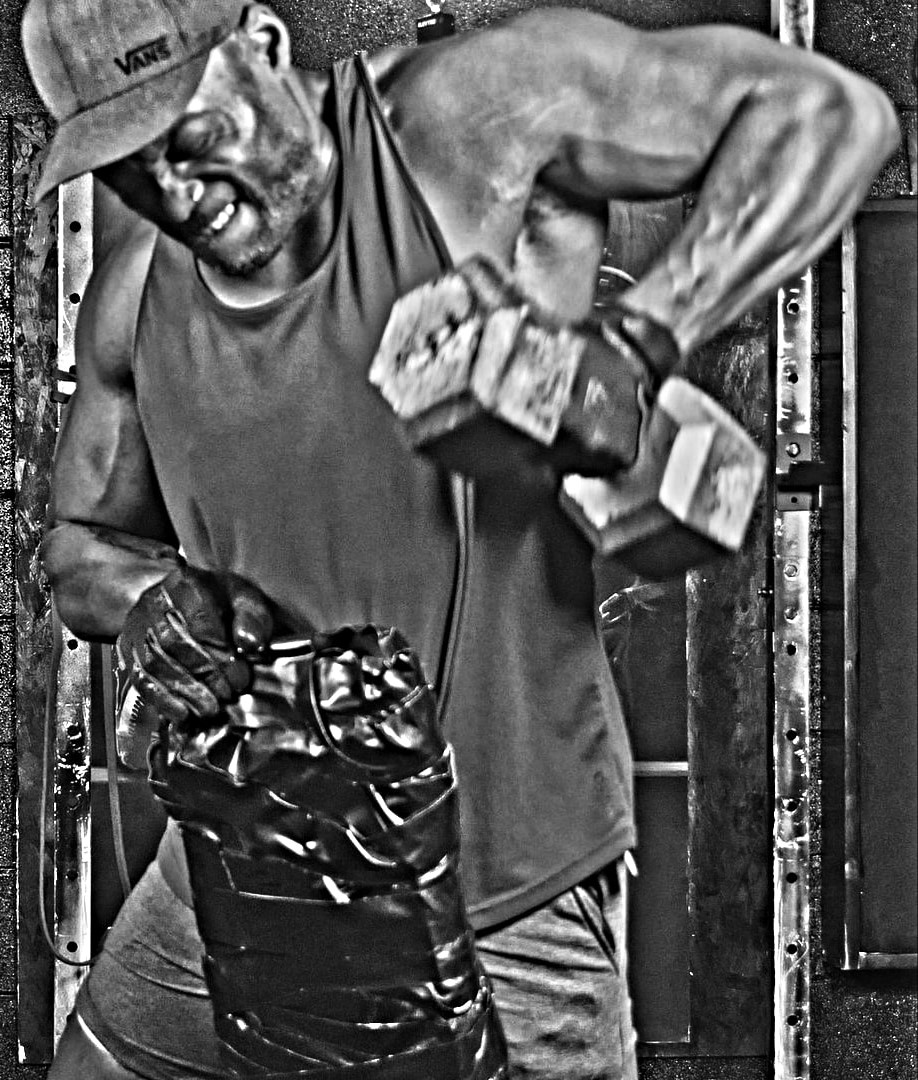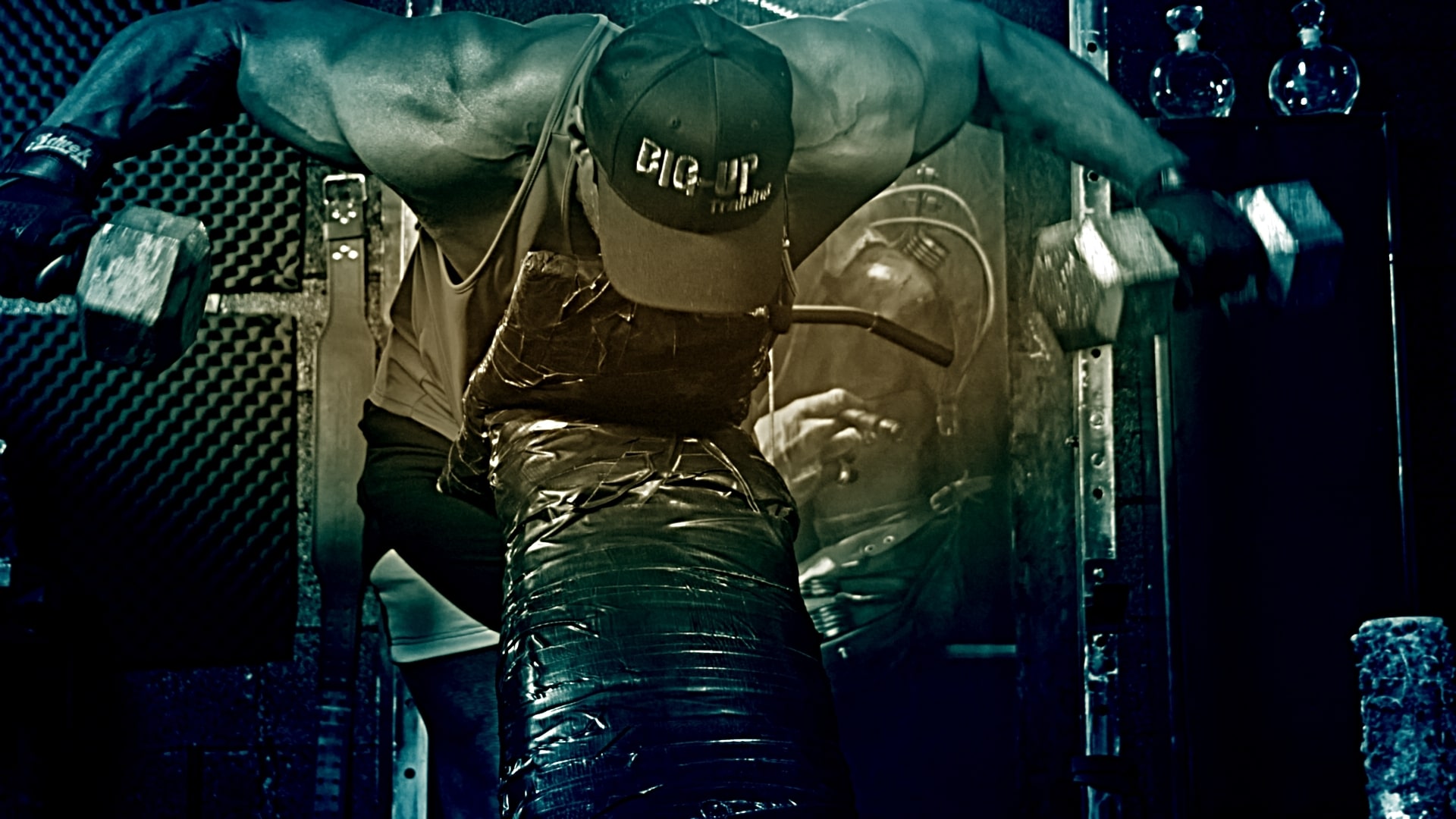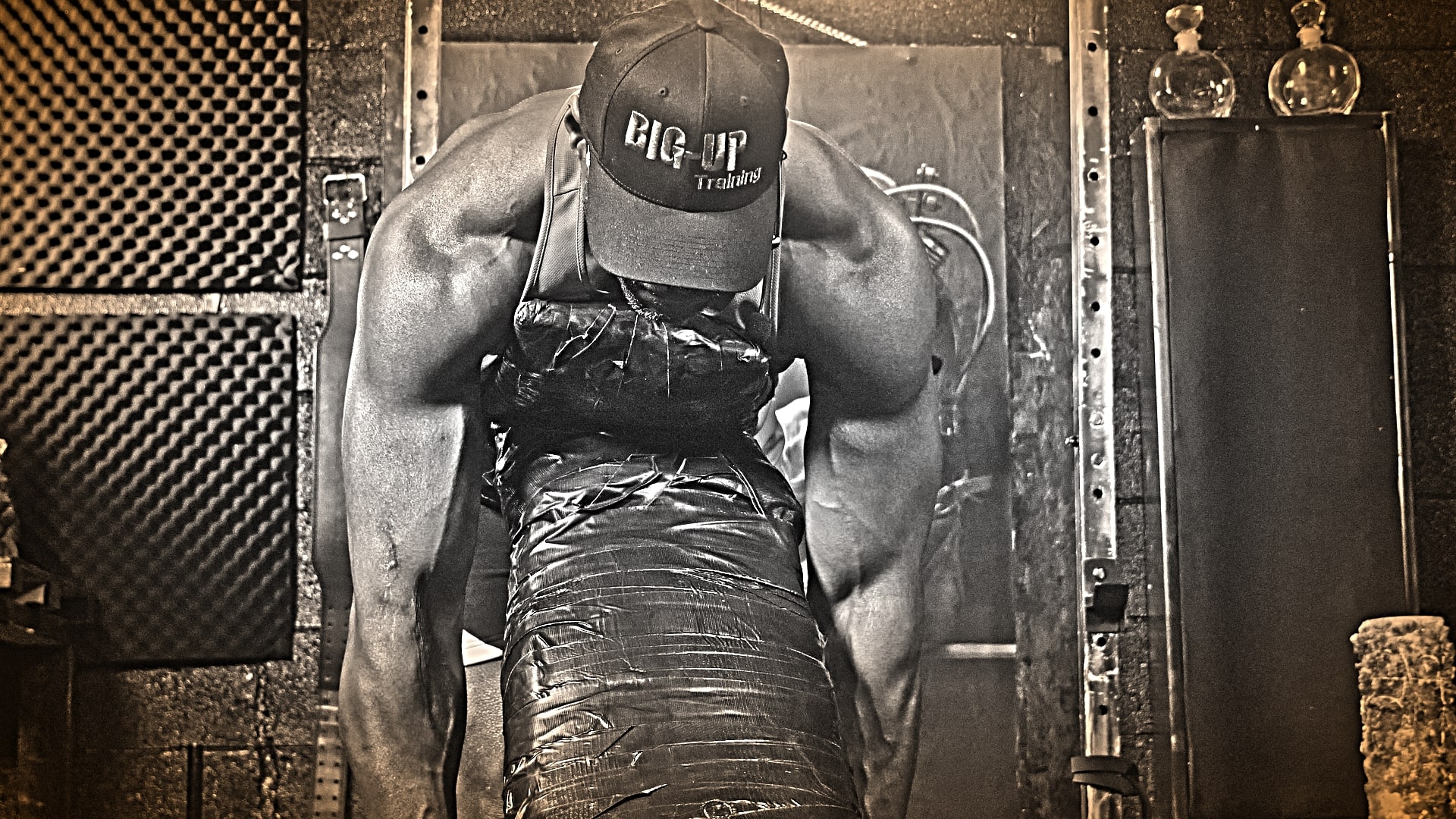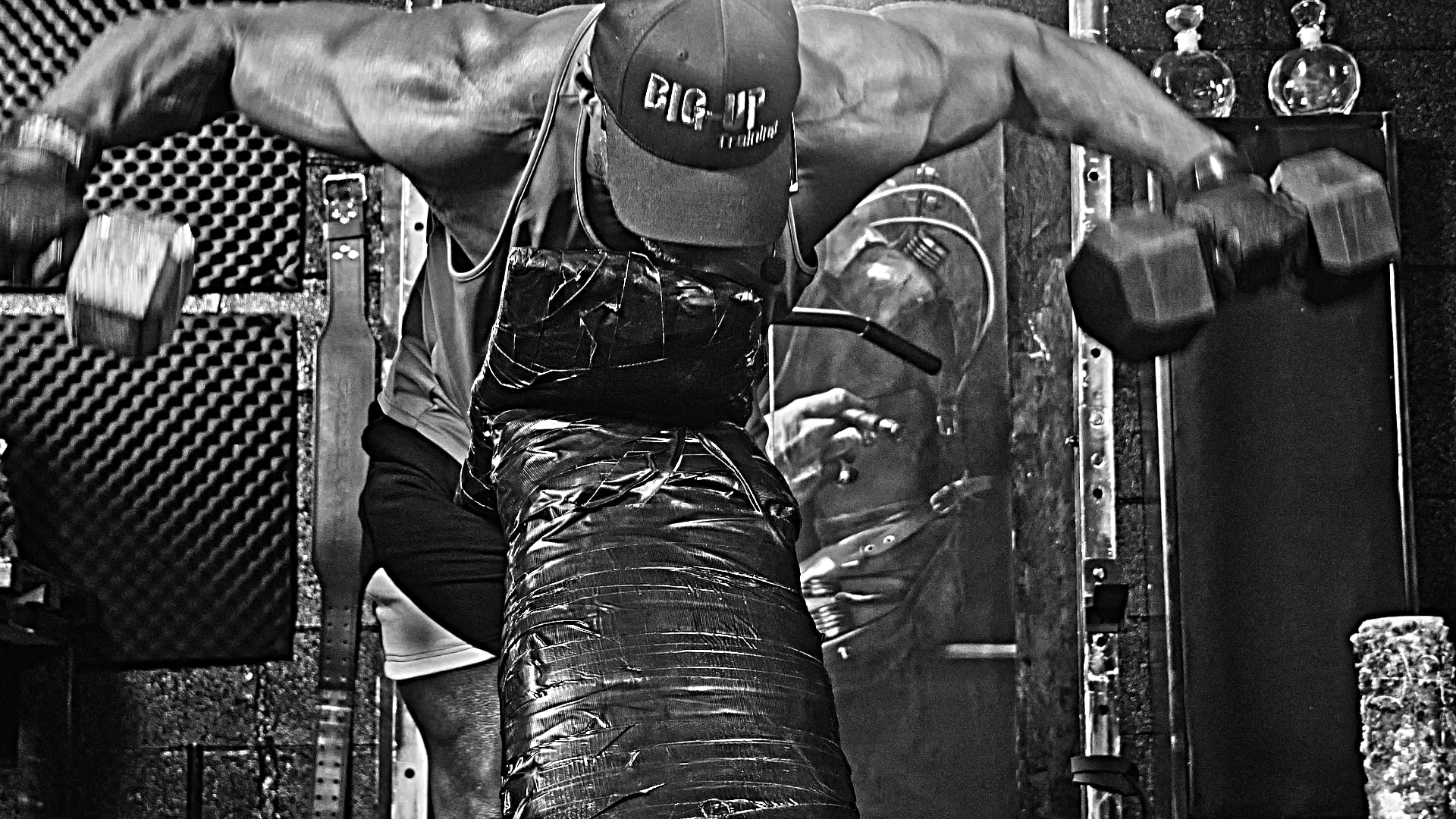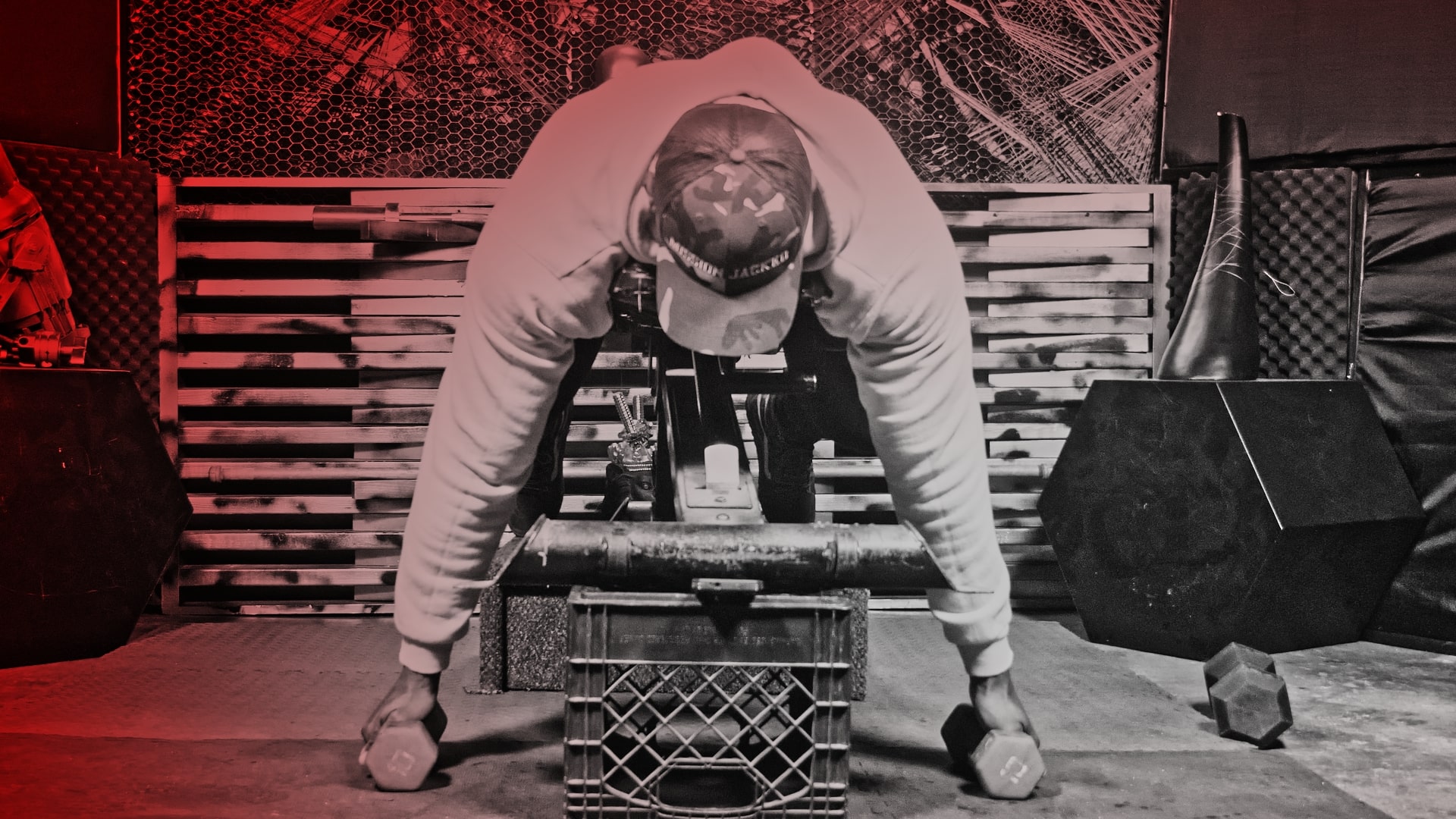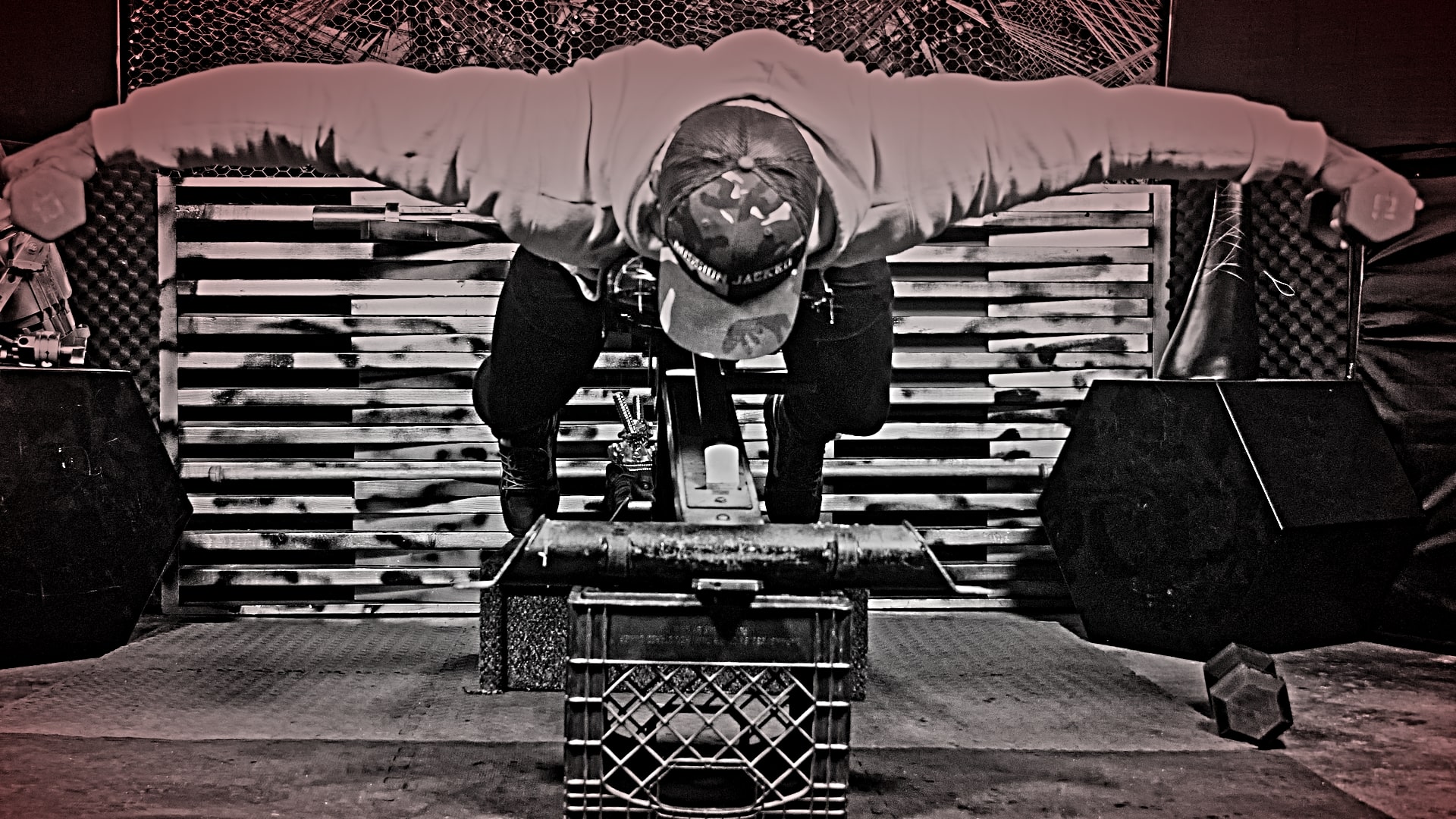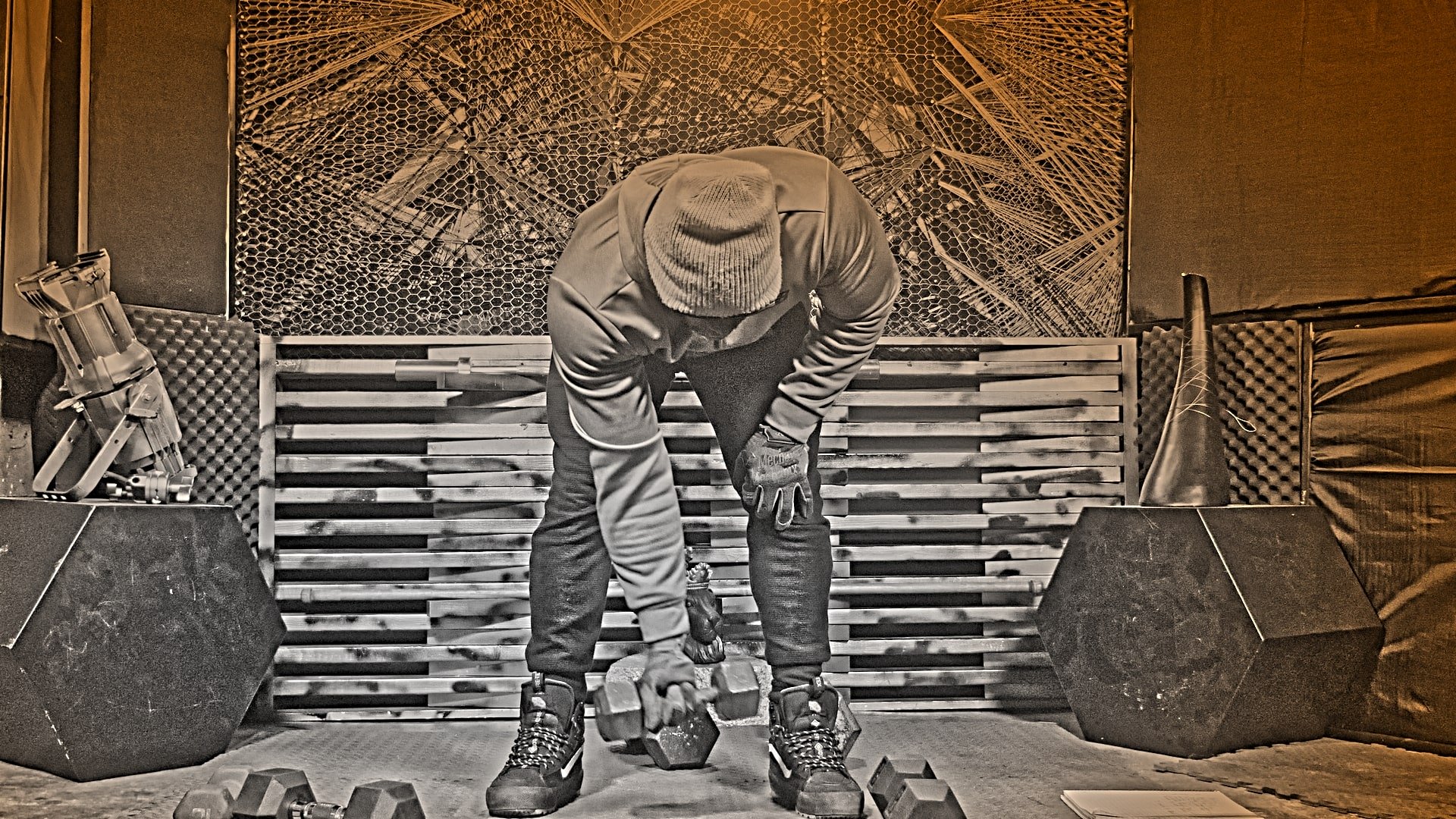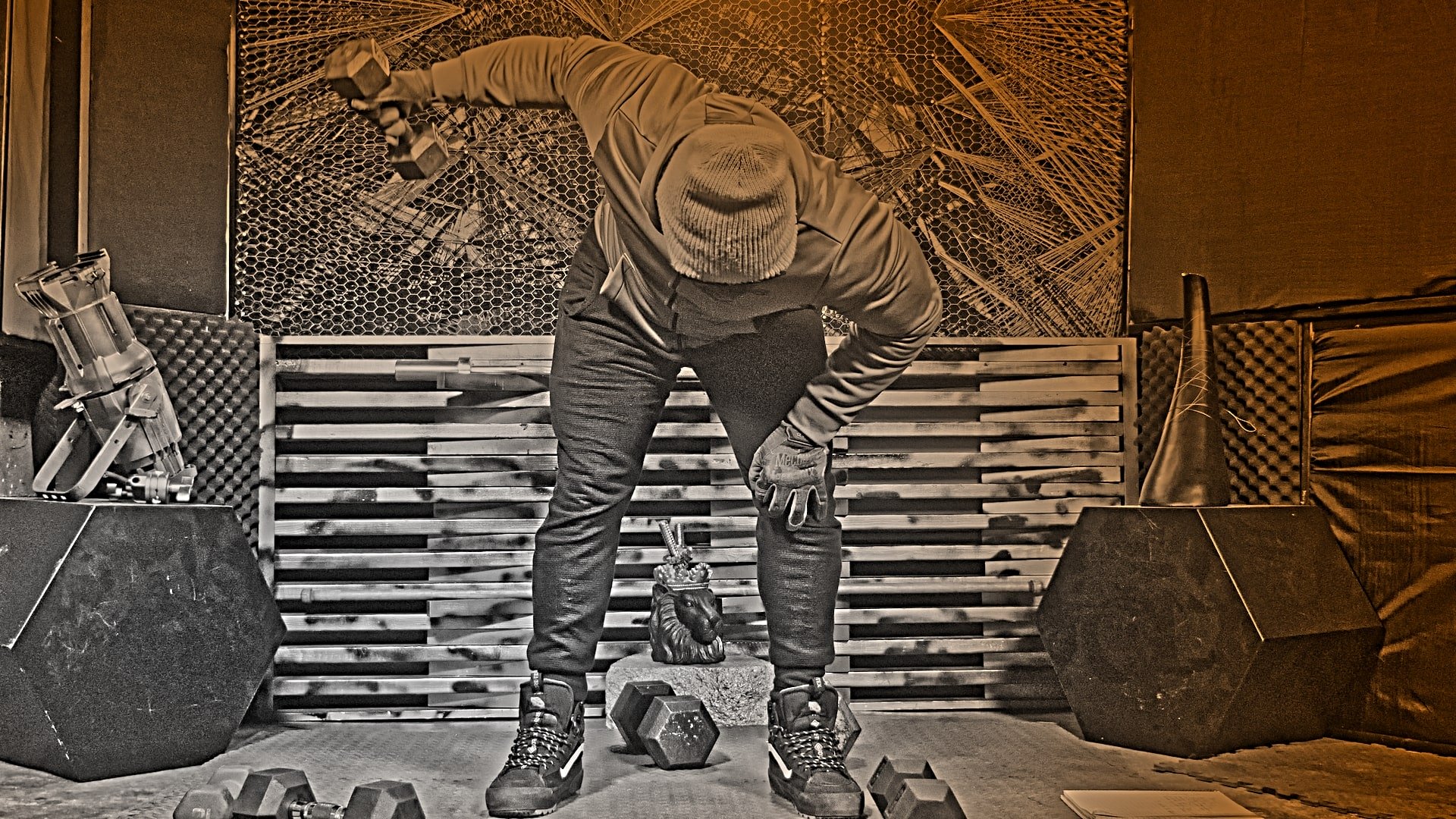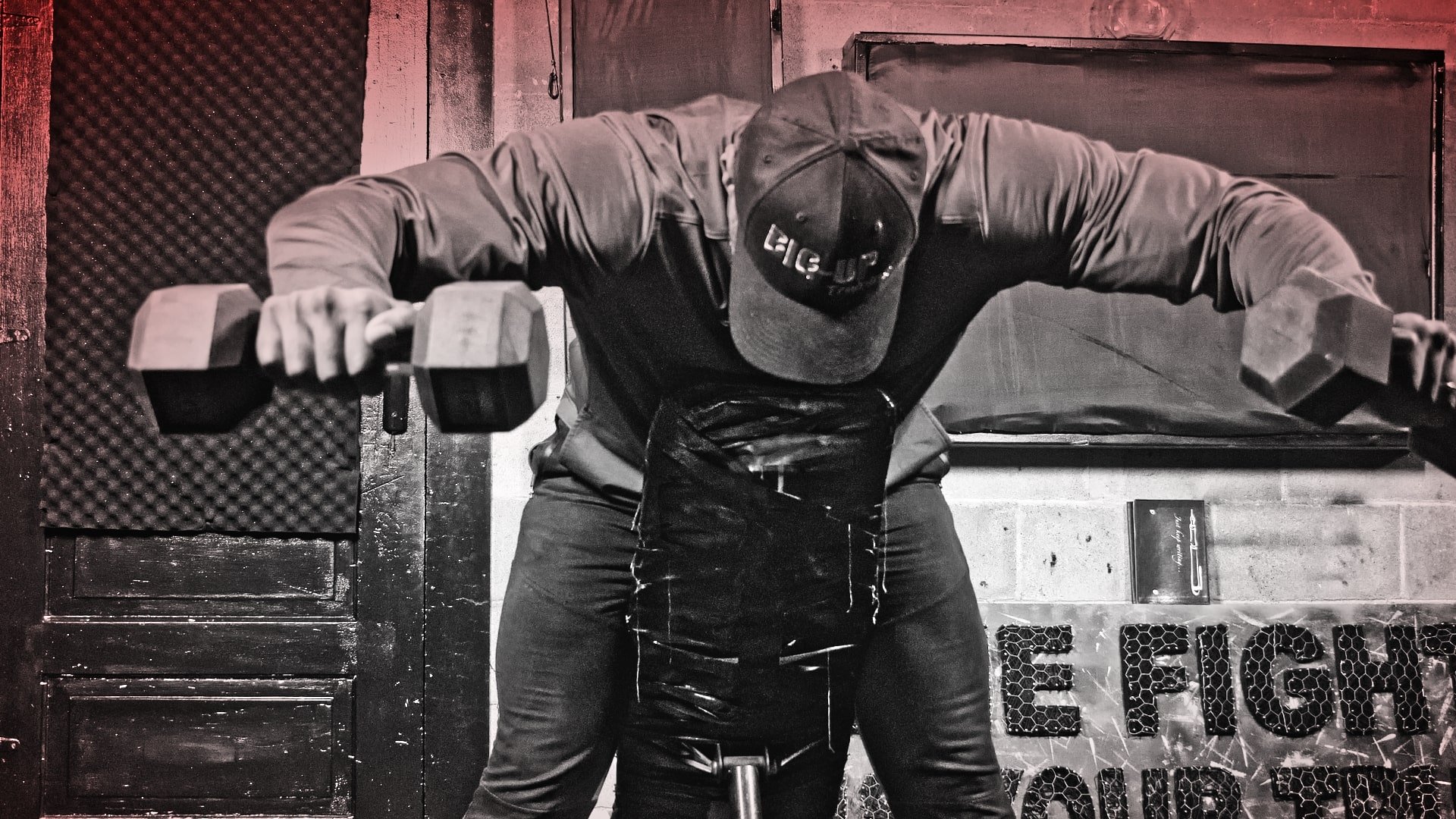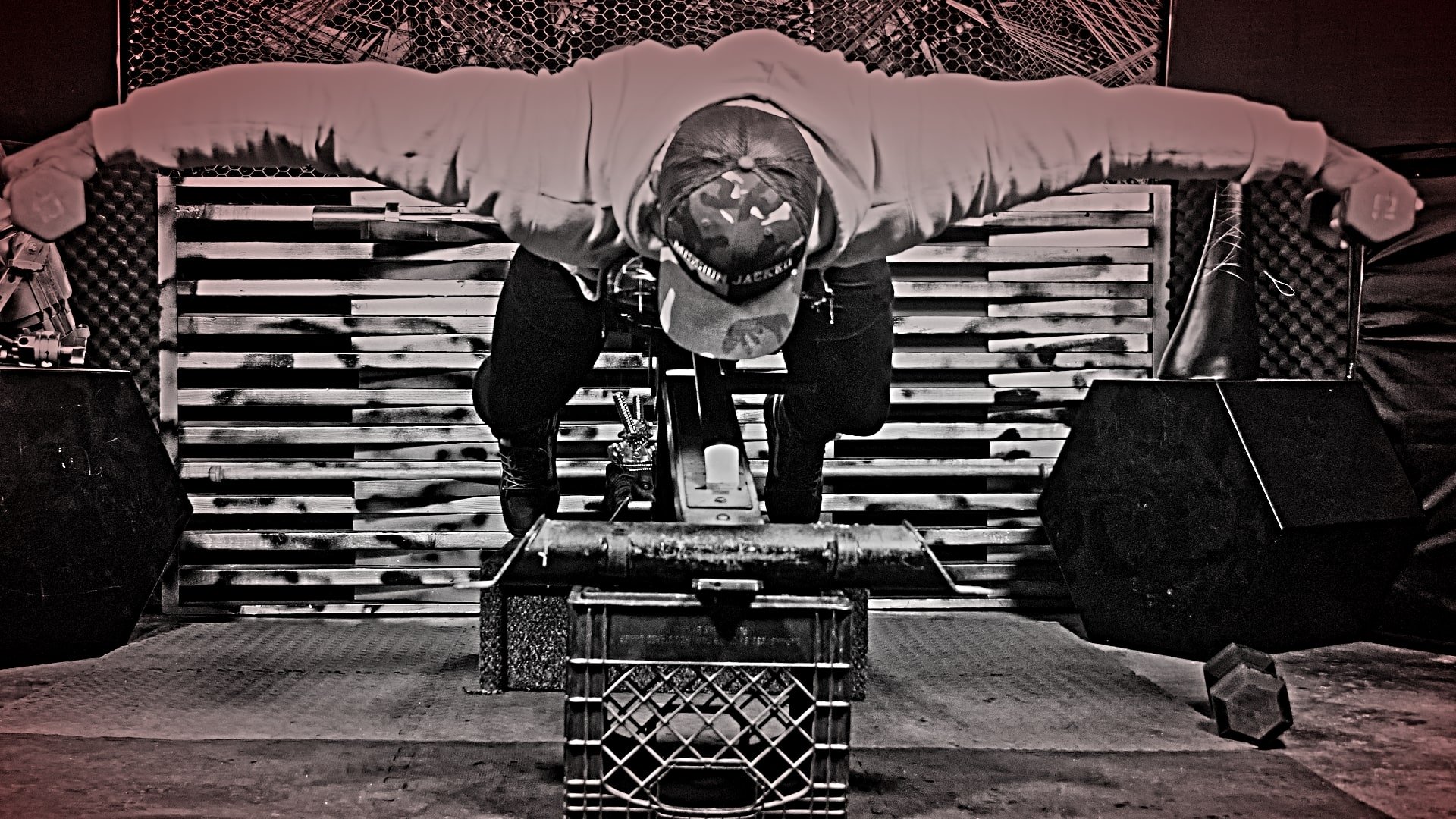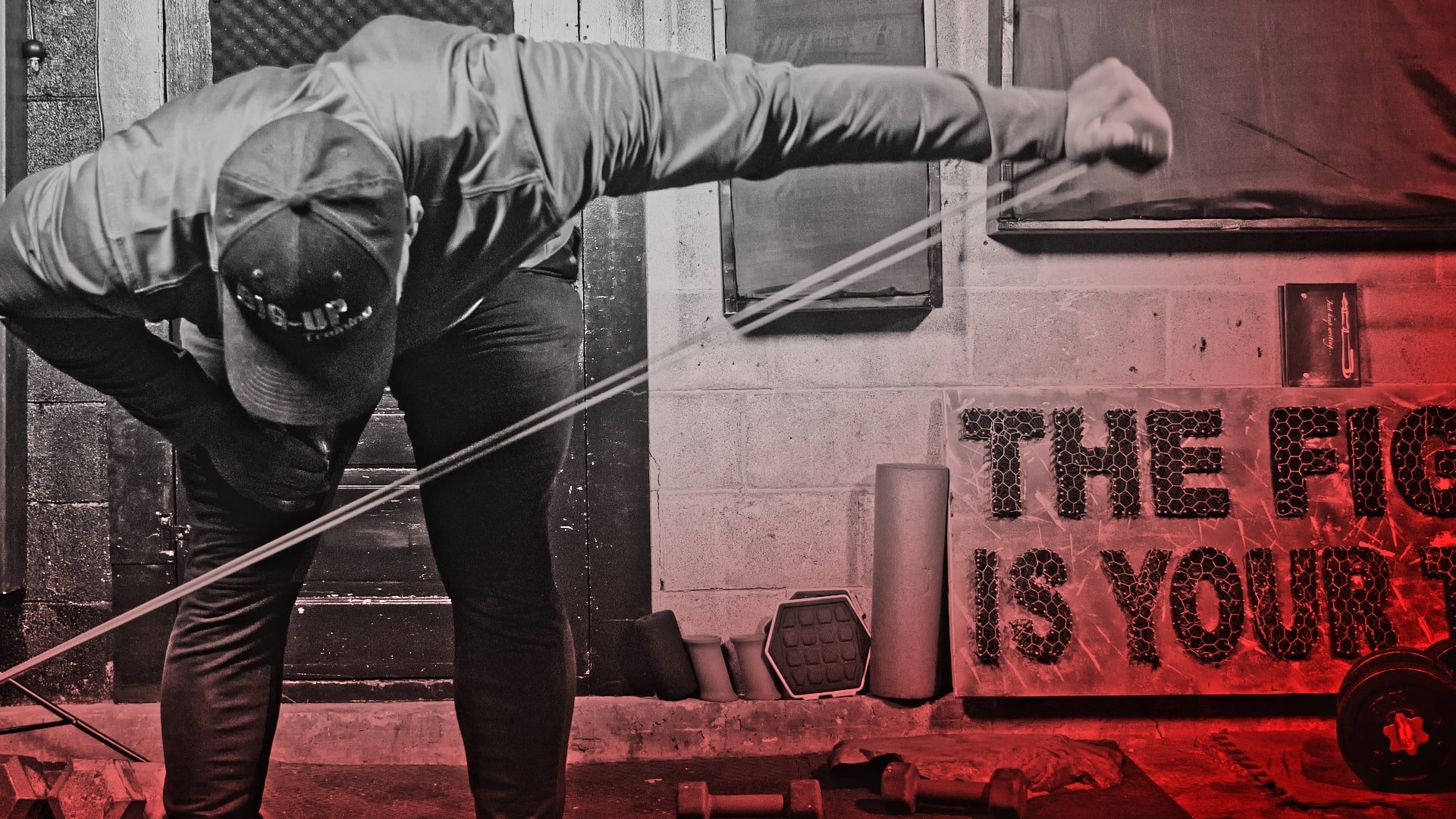Mission Jacked.com
Try This Rear Deltoid Dumbbell Workout For A Huge Size Advantage
Table of Contents:
How Do You Build The Rear Delt Muscle?
Rear Delt Dumbbell Workout – Warm-up:
More Deltoid Articles Under The Spotlight
Best Rear Delt Dumbbell Exercises
The Rear Delt Fly Form Guide Plus Six Variations
The Best Dumbbell Shoulder Workout For Mass Monster Status
Master 5 Versions of The Rear Delt Cable Fly For Stunning 3D Delts
Have You Tried This Muscle Building Rear Delts Workout?
The 5 Best Rear Delt Exercises That You're Not Doing!
Use the Seated Face Pull for Stability, Growth and Bigger Lifts
Use the Incline Rear Delt Raise To Build Incredible 3D Delts
The Leaning Lateral Raise - A Great Way To Cap off The Deltoids
Choosing Urethane and Rubber Dumbbells For Your Home Gym
Warning: This rear deltoid dumbbell workout will test every last muscle fiber you have located on the back of your shoulders and is designed for the intermediate to advanced lifter.
If you’re tired of disappearing the moment you turn to the side and the rear and have desires of looking like a 3D beast with a rear deltoid view exuding depth and thickness, this rear deltoid workout with dumbbells has your name engraved on it.
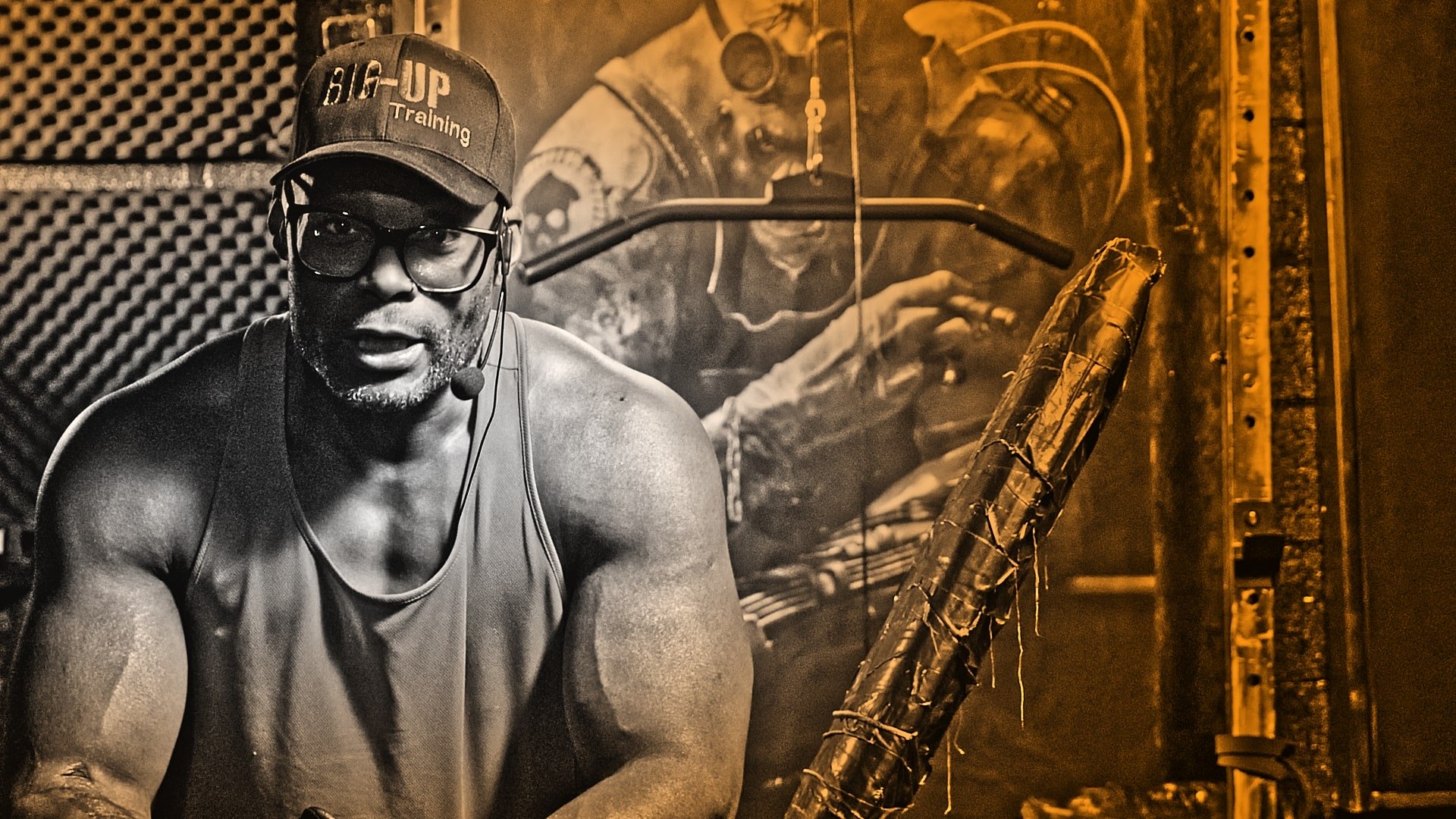 52 year old architect of the Mission Jacked movement!
52 year old architect of the Mission Jacked movement!My name is Psymon H., architect of the Mission Jacked movement, creator of the BIG-UP Home Training System, and the man making his name from improving physiques and growing natural muscle with minimal equipment.
If you train with minimal equipment, you may be asking yourself “how can I work my rear delts at home?”
All you need to be able to effectively work your rear delts at home are three things…
1: dumbbells
2: Bench
3: A Free Mission Jacked Rear Deltoid Dumbbell Workout Program.
This rear delt training program is split into two workouts per week spread over four weeks. Inside this article, we'll cover both rear delt workouts.
Each workout will come with cues, tips, pictures, and workout information; all you have to do is apply yourself and take care of business inside and outside the gym. If you haven't done so already before you start, read the Mission Jacked disclaimer.
Are Rear Delts Hard To Grow?
Yes and no. A certain amount of rear deltoid success and growth will be based on genetics. For some, this will come relatively easy due to structure and genetic potential. These people have an innate gift of growing decent-sized rear deltoids with just a little application in the gym. For these lucky souls, they don't need a specialized rear deltoid dumbbell workout.
On the flip side, some lifters struggle with growth in this area. Sometimes this is down to genetics and other times lack of training, bad form and lack of knowledge can be the problem.
Even if you’re not blessed genetically in this department, there are still things you can do and mistakes you can avoid when training the rear deltoids.
Here Is One Mistake I Want You to Avoid On Your Next Rear Deltoid Dumbbell Workout:
Swinging the Dumbbells:
Swinging dumbbells is usually linked to lifting too heavy which leads to the inability to perform a full range of motion on every repetition. When the weights are too heavy, momentum has to come into play to get the weight from point "A" to point "B." When we're using momentum to perform a set, two things happen.
1: The muscle gets robbed of much of the work. In the case of the rear deltoids, stronger surrounding muscles such as the Traps and upper Back take over leading to underdeveloped posterior deltoids.
2: Keep swinging heavy dumbbells and you may notice strain in your shoulders, rotator cuff back, or neck area. Once this happens, there are typically two outcomes.
Outcome 1: you're sitting on the sidelines with an injury hoping and praying you'll be back soon, but in the meantime, you're losing muscle and motivation will soon follow.
Outcome 2: Your body starts to compensate by using other muscle groups and outcome 1 becomes inevitable.
db Rear Delt Fly
rear delt dumbbell exercises
How Do You Build The Rear Delt Muscle?
When performing this rear delt dumbbell workout, don’t let ego drive the session into the ground. Put ego in the backseat because reducing the weight will enable you to perform the movements with good form and much more effectively.
To be able to build the rear deltoid muscle, it helps to understand a little about the muscle’s function and how to best contract it for growth.
The Rear Deltoid has three roles…
1: The rear deltoids originate from the rear of the body and extend the shoulder backward while also hyperextending the shoulder, pulling it behind the line of your back.
2: When the arms are in an abducted position, it’s called transverse abduction.
3: As the rear deltoids insert on the lateral aspect and wrap around the arm when pulled, they externally rotate the shoulder.
To contract the rear delts effectively, you have to get your elbows up and behind the line of your back. Now we know the job of the rear delts and how to get a good contraction in the muscle, let’s go ahead and warm up the machinery.
Rear Delt Flies
best rear delt dumbbell exercises
Rear Deltoid Dumbbell Workout – Warm-up:
It’s really important that before every rear delt workout session, you warm up the whole shoulder girdle. This helps gets the blood pumping around the area being trained, and also helps you to achieve a good mind/muscle connection.
For this session, we're going to do a warm-up of the shoulder and rotator cuff area using a 4 Point Drill Sequence.
Items Needed: One Light Band & an Upright Anchor.
Reps per Side: x 8 Reps
Setup: Loop one end of the band at waist height around an upright anchor and hook the other end over your thumb or hold the band in the palm of your hand.
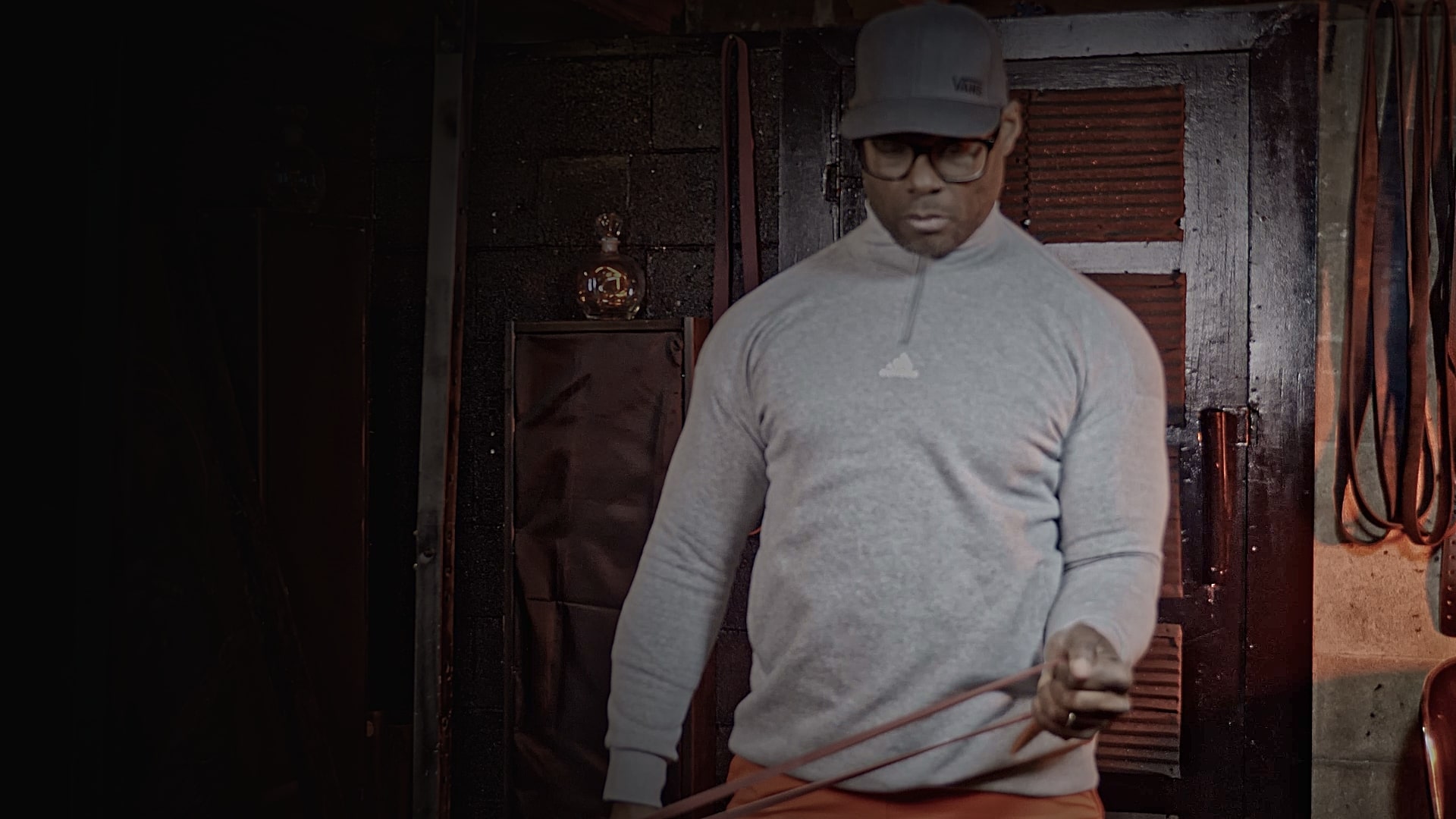 Starting Position
Starting PositionSequence 1: Start with your arm bent at a right angle and tucked into your side. Make sure your wrist is in line with your elbow. Keep your elbow tucked as you pull your wrist out to the side.
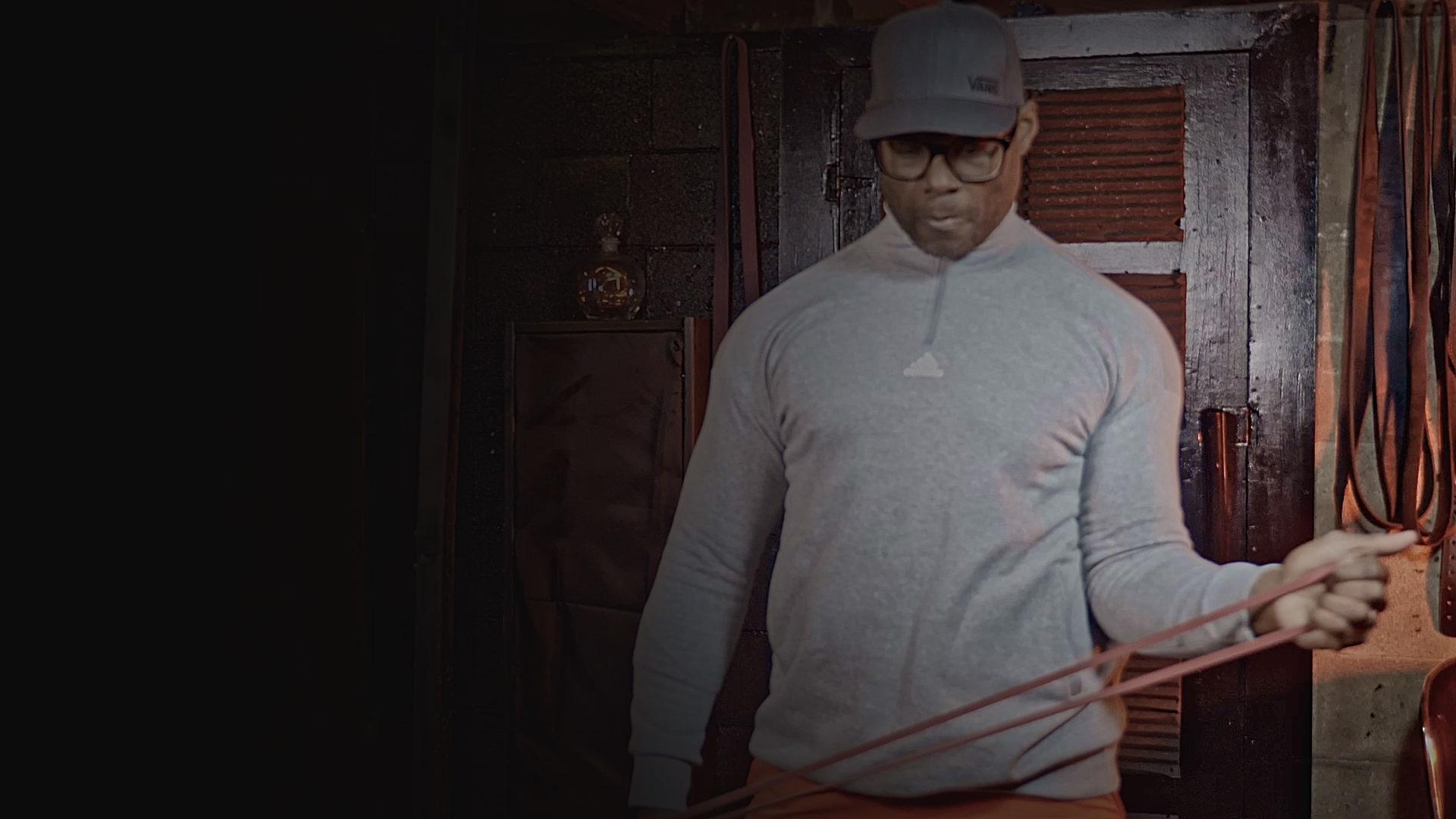 Sequence 1
Sequence 1Sequence 2: Lift your elbow to shoulder height so that your shoulder is at a right angle to the band. Hold for 2 seconds.
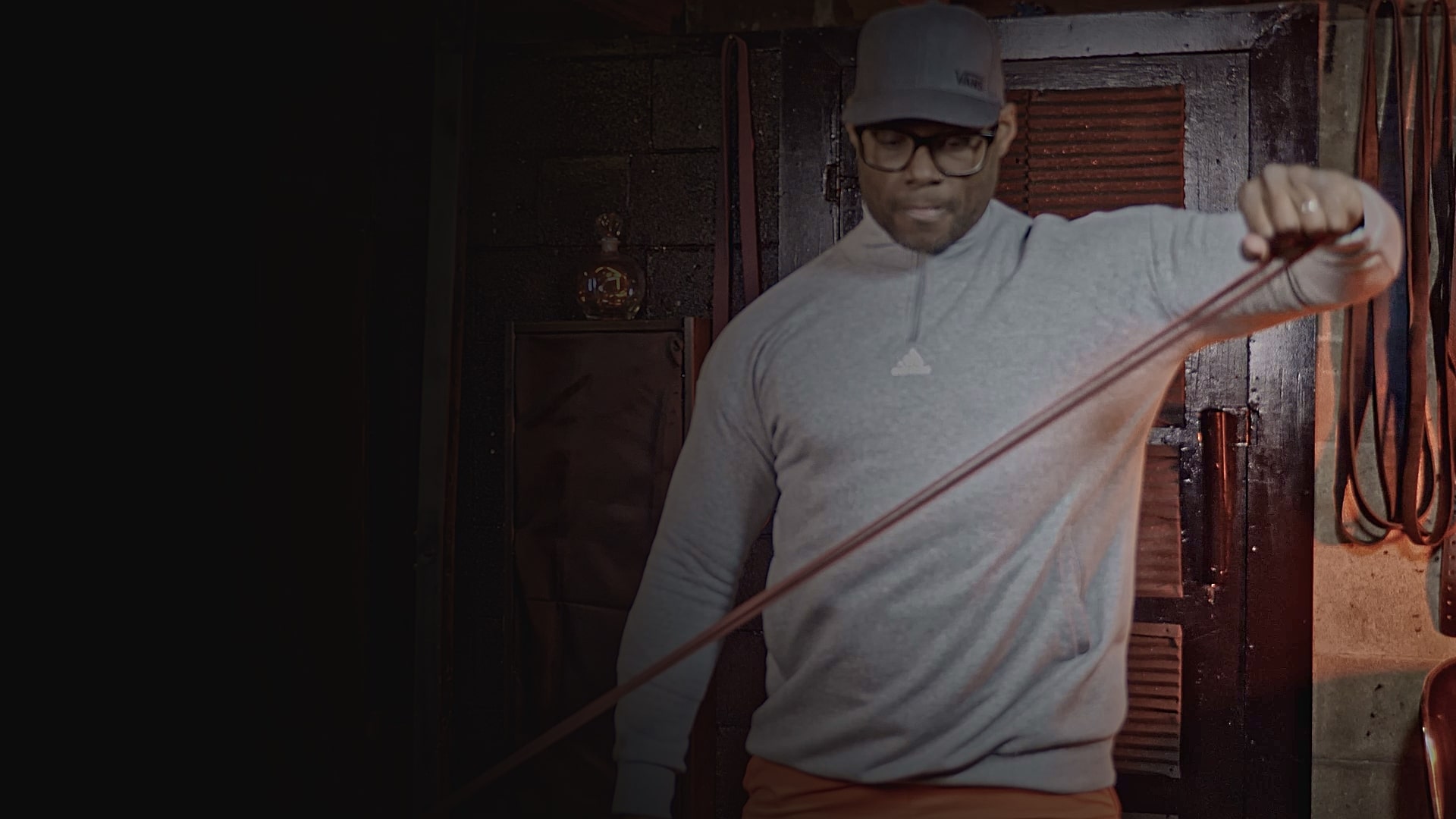 Sequence 2
Sequence 2Sequence 3: Rotate your shoulder so your fist is facing up and is at a right angle to your shoulder. Hold this position for 2 seconds.
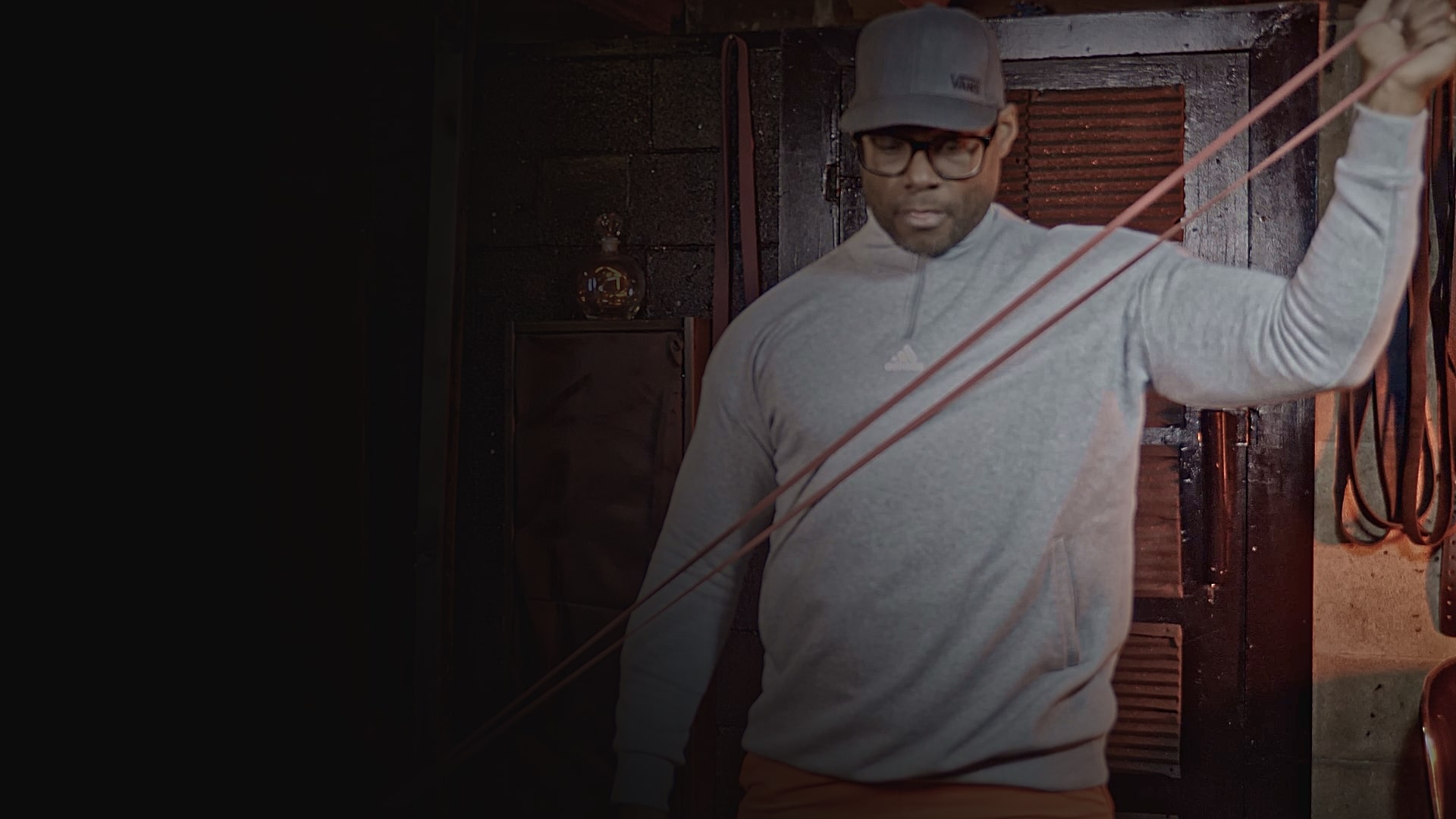 Sequence 3
Sequence 3Sequence 4: Press the band out at a 45-degree angle and hold for 2 seconds. Reverse the 4 point sequence to start the next repetition. Do 8 repetitions and repeat on the other side.
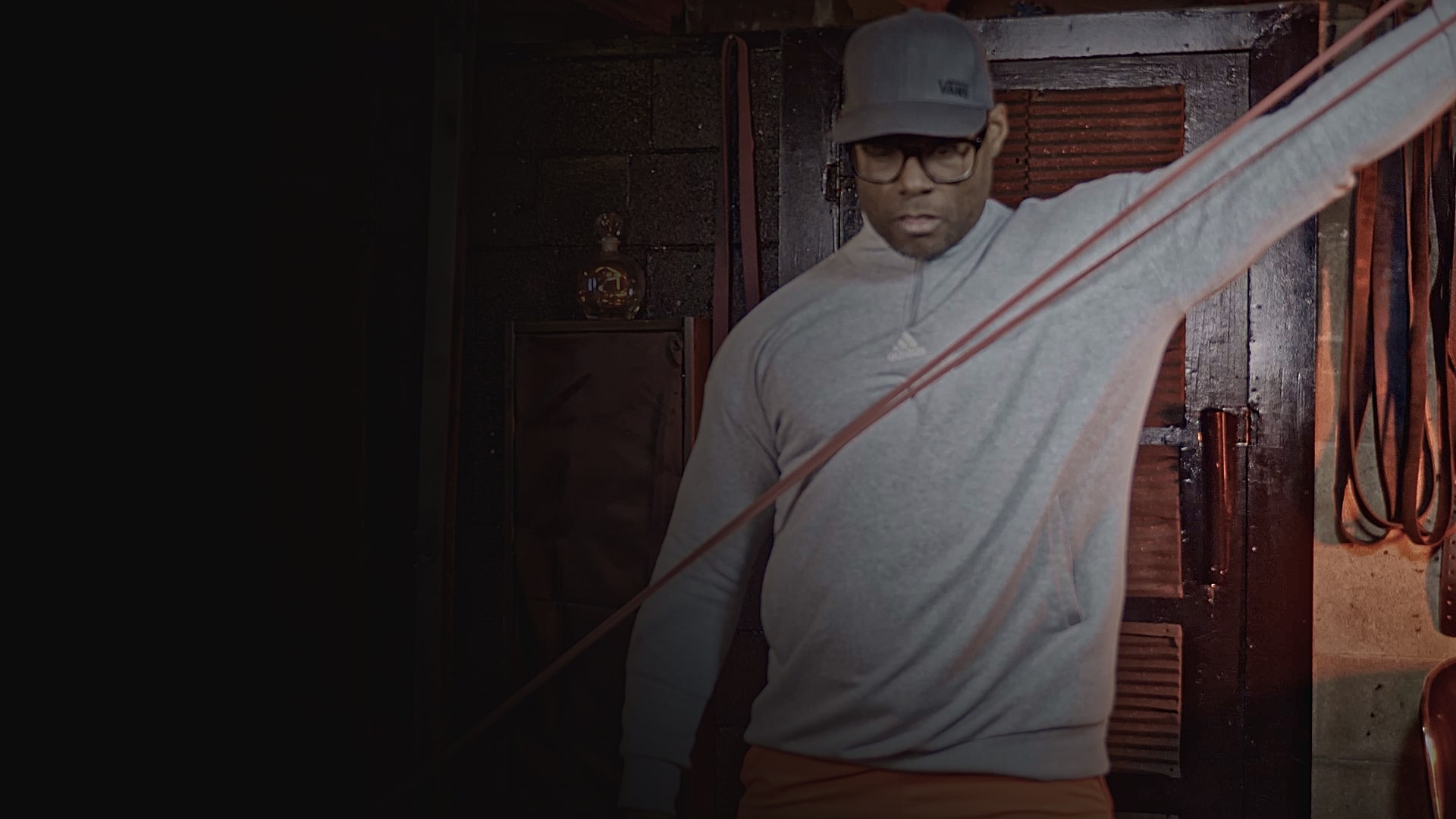 Sequence 4
Sequence 4Rear Delt Row
Delt Flys
rear delt exercises dumbbells
The 3 Best 25 lb Dumbbells On The Market
Important
Note:
Be sure to log every workout set and weight down in a workout journal; this is how progress is made, motivation kept high and muscle built.
Don’t guess your way through workouts, especially focus sessions such as this rear dumbbell workout.
Two weeks down the road when it comes time to challenge yourself, the numbers in your journal won’t lie but your memory might.
The Mission Jacked Rear Deltoid Dumbbell Workout 1:
For this rear deltoid workout with dumbbells, we’re going to use three exercises.
1: Side Rows
2: Chest Supported Rear Delt Fly
3: Dumbbell Rockets
Rear
Deltoid Dumbbell Workout: Exercise 1 -
The Single Arm Side Row:
While we know that to get the best contraction of the rear delt, we have to get our arm and elbow up and behind the line of our back, the Single-Arm Dumbbell Side Row helps us to do exactly that with precision. This movement should make every lifter's list of best rear delt dumbbell exercises.
Items Needed: One Dumbbell and something to lean on like the back of an upright bench.
Cue 1: Stand beside or straddle an upright bench with a dumbbell at your side and your palm facing in towards you.
Cue 2: Keeping your hand close to your side, row the dumbbell up as high as you can under the armpit, and try to lead with your elbow.
Cue 3: Briefly hold at the top of the movement before slowly lowering the dumbbell to the start position.
Extras: To take things up a notch, you can practice rotating your palms in a supinated position as you pull the dumbbell to the top position, and then rotate your palm back in a neutral grip as you return to the start position.
On this rear deltoid dumbbell workout, we’re going to perform one warm-up set and 3-5 working sets of 8 repetitions, aiming to leave two repetitions in reserve.
Reps in Reserve (RIR)
This rear delt dumbbell workout is structured around the use of Reps in Reserve (or RIR) as a tool to measure the intensity of effort. I
If you're new to reps in reserve, don't worry, you'll soon get the hang of this convenient way of tracking workout intensity and measuring how hard a set feels and how many more reps you could have achieved to failure.
The idea of reps in reserve is an easy concept to understand on paper; for example, you know "2 Reps in reserve" means you leave 2 reps in the tank.
The way we’re going to use reps in reserve for this rear deltoid workout and exercise is by making use of the autoregulation training protocol.
· On set one after you perform 8 repetitions you will ask yourself if you are higher or lower than the two reps in reserve benchmark. If after 8 repetitions, you feel as if you could have completed 3 or more repetitions, you add weight to set number two.
· If at the end of set one you have one rep or fewer in reserve meaning you could have only done one or fewer repetitions to failure, you reduce weight for set number two.
· On completion of your first set, you had 2 repetitions in reserve, meaning you had no more or no less than two repetitions in the tank; you keep the same weight for set number two.
Provided you are training hard enough, this is a great way of being able to manage the fatigue accumulation that's likely to happen over a 4-week training block.
If all things are equal and your nutrition, rest, and stress management are all on point, what weight may have been logged down as 2 repetitions in reserve on week one may be much improved by week three.
For exercises 2 and 3 of this rear deltoid dumbbell workout, we're going to continue using the 2 repetitions in reserve as our benchmark, but we're going to perform the exercises in a slightly different manner. Before I explain more about how we're going to execute the exercises, let me share the exercise cues and tips.
Rear Delt Row
Choosing The Best Dumbbell Set With Rack 5 50 lb. Combo
Seated Rear Delt Fly
deltoid dumbbell exercises
2: Chest Supported Rear Delt Fly:
This is a great exercise for crushing the Rear Deltoids and instigating growth. Like with most exercise movements, the better the execution, the more room for stimulation.
Items Needed: Incline bench & a pair of dumbbells.
Cue 1: Lean over an incline bench set at between a 45 and 60-degree angle. Make sure to walk your feet right under your shoulders to add more stability to the movement.
Cue 2: With dumbbells in hand, palms facing each other, and arms remaining almost straight, raise the dumbbells out to the side in a sweep motion, until your elbows are slightly higher than the line of your Shoulders.
Cue 3: Hold for a brief second before lowering the dumbbells to the start position, trying to maintain as full a motion as possible.
Looking For More Rear Delt Fly Variations? Check Out Our Bent Over Dumbbell Rear Delt Fly Article
Rear Delt Flys
rear delt dumbbell
Rear Deltoid Dumbbell Workout: Exercise 3 - Dumbbell Rockets
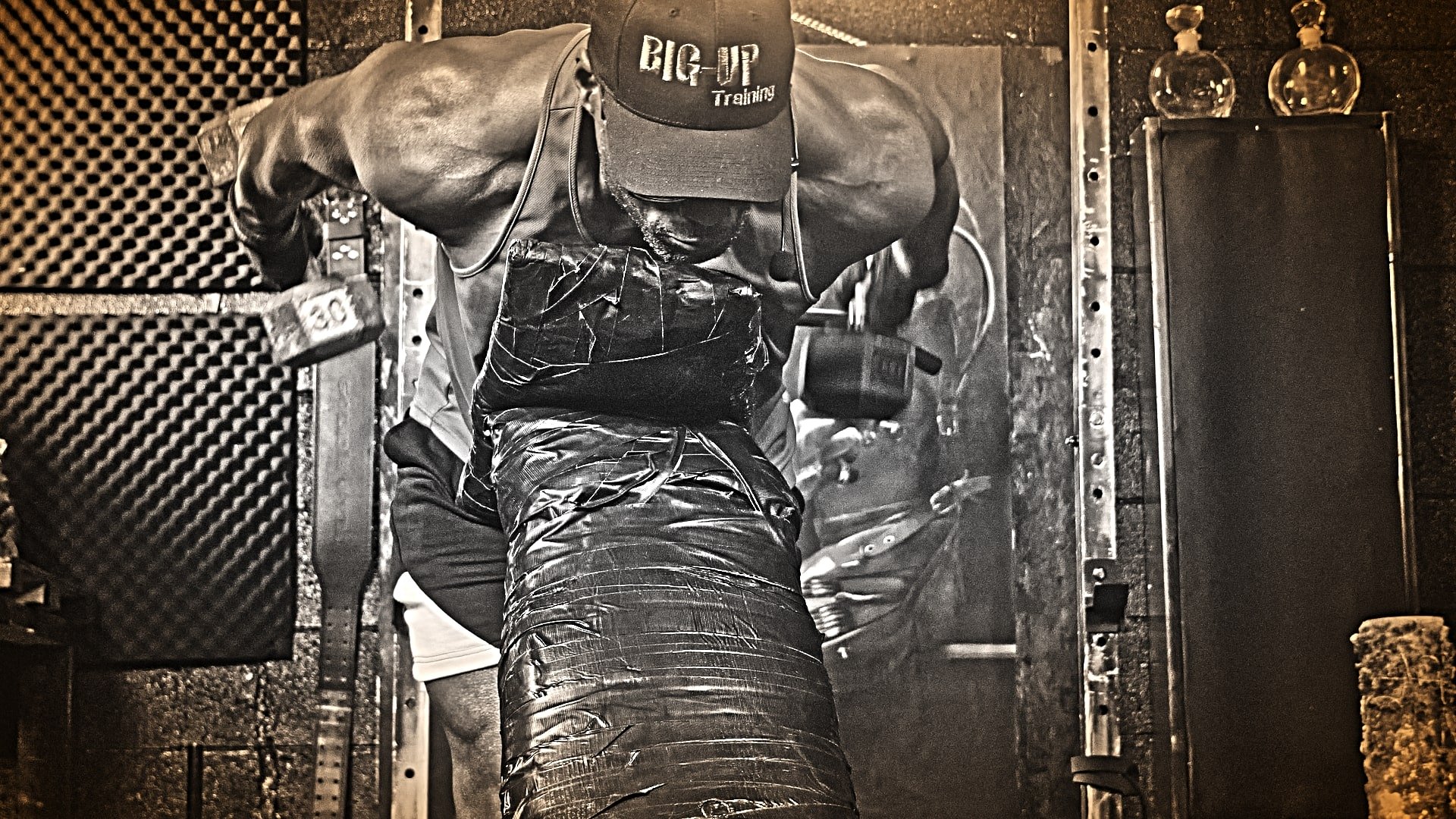
As I mentioned earlier, the rear delts hyperextend and extend the shoulder backward, pulling it behind your Back. The Incline Dumbbell Rocket focuses on this motion and puts serious stress on the Rear Deltoids. The art of this movement is to practice pulling back with the muscle instead of aimlessly swinging the dumbbells behind you and creating momentum.
Items Needed: Incline bench and one pair of dumbbells.
Cue 1: Lay face forward over an incline bench set at between a 45 and 60-degree angle. Grab a pair of dumbbells with either a palm back or with palms facing each other.
Cue 2: With arms hanging straight down, raise the dumbbells up and behind you so they pass the line of your hips before returning them to the start of the exercise.
Adding In an Intensity Technique To Your Rear Deltoid Dumbbell Workout:
The In-Set Superset:
We’re going to up the intensity of our workout by forging together the last two exercise movements while still using the two repetitions in reverse. Unlike traditional supersets, where one exercise is completed before immediately doing another set of a different exercise, you will alternate between Chest Supported Rear Delt Fly and Dumbbell Rockets inside one set by doing one repetition of the first exercise followed by one repetition of Dumbbell Rockets.
You will complete 8 repetitions of each exercise totaling 16 repetitions per set x 2 sets. Remember, one rep of each movement makes one whole repetition.
delt row variations
Dumbbell Rear Delt Fly
dumbbell rear delt row
Rear Deltoid Dumbbell Workout 2:
For your second rear delt dumbbell workout, you will be using two exercises and one intensity technique. Make sure to warm up using the 4 point Sequence drill we used in the first rear delt workout.
Exercise One: Dead-Stop Rear Delt Flys
Dead-Stop Rear Delt Flys are awesome, full-stop. This exercise zeros in on the rear deltoids and removes momentum in the process. “Dead-stop” means that you will be lifting the weights from the floor on every repetition instead of flying with them as you would on a normal rear delt fly.
Items Needed: One pair of dumbbells, a flat bench, and two crates or a couple of bumper plates that will go under each end of the bench to lift it higher off the floor and give you more room to fly off the floor.
Set-Up: Place a crate or a couple of bumper plates under each end of a flat bench. Have the dumbbells on the floor on either side of the bench level with where your shoulders will be once you lay face down on the bench. As both arms need to be straight, you may need to move the dumbbell away from the bench depending on the length of your arms.
Cue 1: Lay face down on the bench and grip each dumbbell without lifting them off the floor. Retract your shoulders by pulling them down and tightening your core muscles.
Cue 2: Lift the dumbbells off the floor in a fly motion until your elbows are at least in line with your shoulders. Try not to lift your body off the bench and fly the dumbbells back; instead, pin your body to the bench and fly the dumbbells either in line with your shoulders or just in front.
Cue 3: Briefly hold the top position before slowly lowering the dumbbell back to the floor. Try not to slam the dumbbells on the floor but place them instead.
Rear Delt Dumbbell
dumbbell rear delt exercises
Rear
Deltoid Dumbbell Workout Exercise 2 –
Supinated Single Arm Row - aka
Bent Over Underhand Dumbbell Row:
This is a formidable exercise for effectively contracting the rear delts because the premise of the movement is to get your elbows up and behind the line of your back. You can do this exercise by either hinging at the hip (as in the picture) or by leaning over on a bench.
Cue 1: Hold one dumbbell with a supinated grip and hinge over at the hip. With feet shoulder-width apart, start with the dumbbell in between your feet.
Cue 2: Retract your shoulder blades by pulling them back and tensing your core muscles.
Cue 3: Row the dumbbell in line with your shoulders until your elbow is behind the line of your shoulder blades.
Cue 4: Squeeze your rear deltoid at the top of the position before slowly lowering the dumbbell to the start position in between your legs.
Here Comes The Fun Part!
Instead of performing a straight-set as you would normally do, we're going to turn the heat up and add in an intensity technique. Welcome to Rep Targeting!
What is Rep Targeting, and How Will It Help My Rear Deltoid Dumbbell Workout?
Rep Targeting is when you set a rep target and achieve that rep target no matter how many sets it takes to attain.
This advanced technique is a training method for lifters who have been training for several years and have surpassed novice and early intermediate level training. It can help your rear deltoid dumbbell workout by permitting you to go further than conventional failure to work the rear deltoids harder, thus delivering a stimulus to get bigger and stronger. As such, this should not be tried by the inexperienced novice lifter.
For this rear delt dumbbell workout, we’re going to set our rep target at 50 repetitions. I want you to choose a weight that permits you to do 15-20 repetitions aiming for 2 repetitions in reserve. I’m going to give you an example of a typical set, but remember that it’s nothing more than an example, and when it comes to you performing the rep targeting, it could turn out much different.
Example:
· On set one, you achieved 15 reps leaving you with 35 repetitions to the target.
· You rest up to 30 seconds
· You perform 10 more reps to failure (2-0 repetitions in reserve) 25 reps to the target
· You rest up to 30 seconds
· You achieve 8 reps to failure leaving you 17 repetitions to your target
· You rest up to 30 seconds
· Complete 7 reps to failure leaving you 10 repetitions to your target
· Rest up 30 seconds
· You perform 5 repetitions to failure leaving you 5 repetitions to the target
· Rest 30 seconds
· You perform your final 5 repetitions and reach your target.
You’re going to do rep targeting for both exercises on your second rear deltoid dumbbell workout (meaning, you will perform for the dead-stop rear delt flys and a rep target for left and right deltoid on the supinated row.)
Bent Over Fly
posterior deltoids exercises
Leaning Dumbbell Lateral Raise
Rear Delt Dumbbell Workout Week 5 – Deload Week:
What is a Deload Phase & Why Should You Care?
A Deload phase usually lasting seven days is a cruise mode strategy used to reduce volume and intensity to give the muscles and body systems a momentary break. It's an opportunity to lessen the accumulation of fatigue built up throughout a training cycle.
As tendons and ligaments take longer than muscles to recover from workout accumulation, deloads offer them time to heal and catch up.
Why Are Deload Phases Advised?
Deload phases are based on research on how the body reacts and recovers from the stress of doing a series of workouts.
Muscles are broken down through stress applied during workouts resulting in a temporary decrease in fitness and strength. As the muscles recover on rest days and deload phases, adaptations are made, and muscles bounce back bigger and stronger. This is known as supercompensation.
When muscles are pushed past the point where a deload phase is recommended, fatigue, a decrease in strength, joint pain, and little motivation to train are specific symptoms.
Why Not Just Take A Week Off Training Instead?
Good question. Taking a week off training may seem the most logical solution to discharging fatigue buildup, but the risk of taking time off is that you may lose some of the adaptations made over the past training cycle.
Undergoing a deload phase that is easy compared to regular training will conserve adaptations in strength and muscle gains while removing fatigue.
On week five, your rear deltoid dumbbell workouts will look like the following:
Rear Delt Dumbbell Workout 1:
Chest Supported Fly x 1 set of 8 repetitions aiming for 5+ reps in reserve
Dumbbell Rockets x 1 set of 8 repetitions aiming for 5+ reps in reserve
Side Row x 1 set of 8 repetitions aiming for 5 reps in reserve.
Rear Deltoid Dumbbell Workout 2:
Dead-Stop Rear Delt Flys x 2 sets of 8 repetitions aiming for 5+ reps in reserve
Supinated Single-Arm Row x 1 set of 8 repetitions aiming for 5+ reps in reserve
Bent Over Flies
rear deltoid exercises
Rear Deltoid Dumbbell Workout FAQs:
Q: On what days should I do my rear deltoid dumbbell workouts?
A: Try to set your rear delt dumbbell workouts evenly apart to give them time to sufficiently recover between workouts. Example: Monday and Thursday.
Q: On my first rear deltoid dumbbell workout (auto-regulation training), I noticed a weight increase from week one through to week three. In week four, my poundage took a nosedive, is this normal?
A: Yes, this is completely normal. As you get closer to a Deload week, you will notice a slight decline in the weights you use as fatigue accumulation sets in, provided that you've been training hard enough during weeks one through four. If you can do it safely, push yourself to complete your workouts and then follow the Deload instructions for week five.
Q: What should I do if my poundage declines heavily on week three?
A: If you notice over a few weeks your strength has decreased, start looking at the areas that matter because there could be one of many reasons why strength can decline.
Let's start with the most obvious culprits…
1: Nutrition – Is your nutrition in check? Are you missing meals?
Are your calories and protein set at the correct levels?
Do you have enough sodium coming in?
How are your fats and carbs?
2: Sleep – So you’ve had arguments with your significant other long into the night leading to shorter sleep; something as simple as sleep being out of sync could affect your strength levels in the gym and your ability to recover.
3: Outside Stresses: Sometimes, life gets in the way of training; personal, work, and social issues come up and add extra weight to our day. If you're prone to stress and constantly find yourself in the thick end of life, take a step back so you can see the pressures that are within your control and the ones that could hinder your training. Stress management is quintessential to building muscle and keeping cortisol and other stress hormones in check.
4: Is your workout volume too high? It may be that you've surpassed the maximum amount of volume you can complete and still be able to recover from. While progression and, ultimately, volume increases are essential to long-term muscle growth, part of your journey is to find out where the limits lay.
In all of the scenarios mentioned, you have a certain amount of control. If you're serious about improvement, you have to make sure these areas are covered as best you can.
If all areas are optimized and your strength levels have not returned, I would drop a set or two for each muscle group for one week, and if you see no change, take an early deload week and restart your rear deltoid dumbbell workout.
Q: Should I increase my weight on the next set if I score two reps in reserve?
A: If I'm performing three sets and on the second set, I score my effort as 2 repetitions in reserve, I will keep the same weight for my final set and after completion of my last set ask myself the question, "am I above or below the reps in reserve target?"
Q: Is rear delt push or pull?
A: Working rear deltoid is considered a pull muscle as it's targeted with pulling and rowing motions. For this reason, you could add your rear delt dumbbell workout to your back training days.
Q: What do I do on the second rear deltoid dumbbell workout if on week one I choose a weight for rep targeting that allowed me 25 reps on the first set?
A: Make a note in your workout journal and increase the weight on week two.
Q: What do I do for weeks 6-10 if I want to change my rear deltoid dumbbell workout?
A: First you could look for a different Rear Delt db Fly variation and check out our Best Rear Deltoid Dumbbell Exercises article for more ideas for your next rear delt dumbbell workout.
If you wanted to swap out the intensity technique, you could exchange it for the following…
Variation Giant Sets
If you’ve never done Variation Giant Sets before, this is a real shocker for any muscle group. You perform variations of the same exercise in a giant set fashion. A great example of this would be for your rear deltoid dumbbell workout would be…
Single Arm Band Dumbbell Rear Flys
I would shoot for 10 reps per set aiming for 1-2 repetitions in reserve. You can find all cues and pictures in our Rear Dumbbell Fly article.
Best Rear Delt Exercises
The Dumbbell Deadlift: 5 Variations to Beef Up Your Physique
If you enjoyed this rear deltoid dumbbell workout article and found it useful, please share the hamstring love and either share this page using the social media share buttons at the top of this page or go all out and link to this article by sending us a dofollow backlink.
More Deltoid Fire
Master True Dumbbell Lateral Raise and the 7 Variations To Develop King-Kong Side Delts
Everything You Need To Know About The Bent Over Reverse Dumbbell Fly
Tackle This Mass Dumbbell Shoulder Workout For a More 3D Look
Rear Deltoid Fly Your Way To Better Delts
Master 5 Versions of The Rear Delt Cable Fly For Stunning 3D Delts
Have You Tried This Muscle Building Rear Delts Workout?
Mission Jacked L.L.C
Address: 9407 NE Vancouver Mall Dr
STE 104 #1269
Vancouver, WA 98662 USA
Email: mission@missionjacked.com




